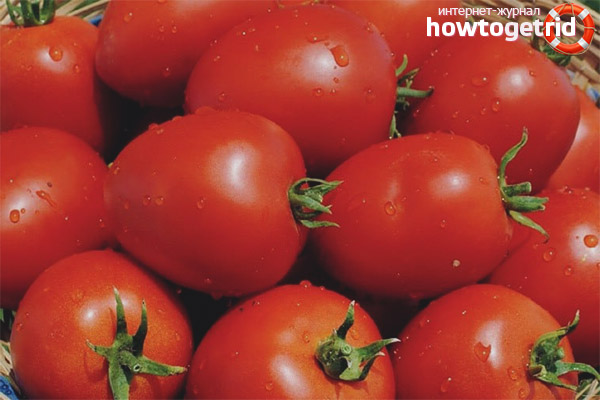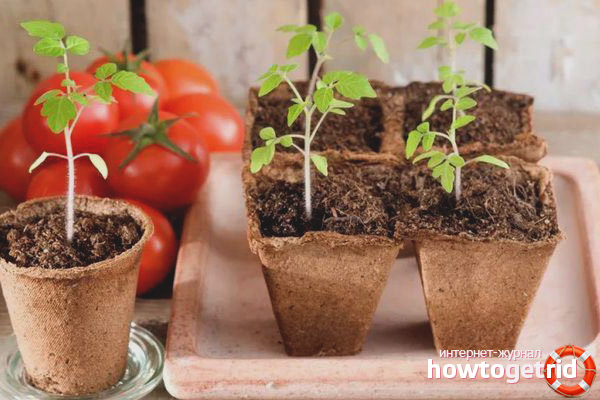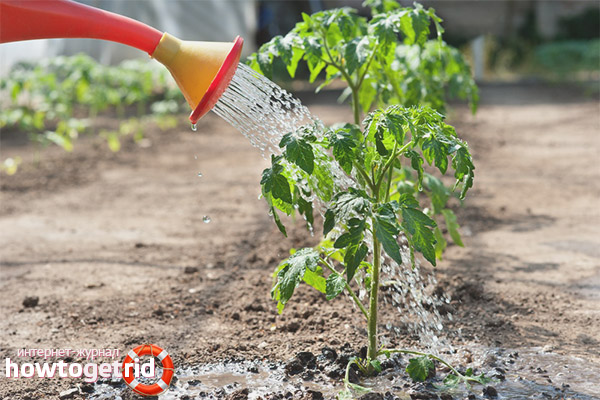The content of the article
Tomato Namib is one of the best early hybrids for business. It gives good profits in spring and even in summer when ground tomato is sold. In addition, it is appreciated by many gardeners who want to plant tomatoes whose bushes are compact, do not take up much space and require minimal maintenance. The Namib hybrid belongs to such varieties. Its bush is up to 50 cm, standard, erect. Early ripe. The fruits are oval.
Hybrid Description
Hybrid of medium ripening. Harvesting can be done 100-110 days after planting in open ground.
- Tomatoes for salad purposes but, despite this, can be successfully used for canning. The disadvantage of this culture is the extremely short shelf life (no more than twenty days).
- The bushes are highly resistant to adverse external factors. The plant actively sets fruit during the entire growing period, this process does not stop even with temperature changes.
- Culture is able to withstand most diseases. The hybrid belongs to the determinant species, and does not require garter.
The variety is often grown for commercial purposes, which contributes to its extreme resistance to transportation over long distances.
Fruit characterization
Fruits have a rounded, slightly elongated shape. When ripe, the tomatoes acquire a bright red tint. The pulp is dense, moderately sugary, juicy. By all accounts, this type of tomato has an overly thick skin. With proper care, the weight of the tomato can reach 110-120g.
Advantages of the hybrid:
- Great taste.
- Short ripening period.
- The fruits ripen at the same time.
- Resistance to diseases and external factors.
Growing seedlings
In leaving this culture is unpretentious. The plant is grown in seedlings. Landing in open ground is carried out at the end of May.
- Seeds are sown 50 days before the planned planting in open ground.
- The best predecessors of tomato are cucumbers, onions, legumes, cabbage. Immediately upon landing, the wells are watered abundantly and organic fertilizers are added to them.
- Seedlings should be elongated, stocky, have a dark green color. If it is not possible to illuminate the seedlings with fluorescent lamps, use various devices so that more sunlight is exposed to the leaves.
- On warm days, they put seedlings on the balcony, covering the first time with lutrasil. They also cover the windowsill and side walls with foil, which reflects the sun's rays on seedlings. You can use mirrors for this. Watering seedlings is necessary once every three days.
- The use of peat pots and tablets for growing seedlings is gaining popularity. Their use also saves time on growing high-quality planting material. Glasses with planted seeds are covered with foil and placed on a windowsill.
- Pay particular attention to providing air and moisture to the root system of seedlings. If natural light is not enough, you should use fitolamps.
The lack of moisture throughout the depth of the soil layer of the tank, as well as its excess, depresses the root system, so the soil in containers with plants must be constantly loosened. As a result, the flow of air into the soil increases, the activity of microorganisms in it improves, which leads to an increase in the release of carbon dioxide, which is necessary for seedlings, as well as elements of mineral nutrition.
Mineral fertilizing, if they were applied to the soil in the appropriate dose during the preparation of the soil mixture for seedlings, is not applied at this time.Good seedlings are the key to a plentiful harvest.
Plant care
In one square place should not grow more than three plants. For the cultivation of this culture suitable sandy and loamy soil.
- Particular attention should be paid to watering. Less often, planting is better, since then it is easier to process, the plants will be better ventilated, less sick. After planting, seedlings are carefully watered so that the roots are not exposed and a crust does not form when dried.
- Tomatoes do not like drought, but they will not receive much benefit from an excess of water, as this can lead to rotting of the roots and an outbreak of fungal diseases. Always ensure that the soil does not dry out. After irrigation or rain, a dense crust forms on the upper soil layer, which must be loosened.
- Namib hybrid is not resistant to bacteriosis, for this reason, it is advisable to carry out prophylaxis.
- Tomatoes are photophilous plants. Therefore, take additional measures to ensure the process of photosynthesis.
Tomatoes are responsive to feeding. Modern drugs provide an instant effect on plants due to the presence of minerals in chelated form. During the fruit pouring period, tomatoes are fed with potash fertilizers.
Video: Namib Tomatoes












Submit